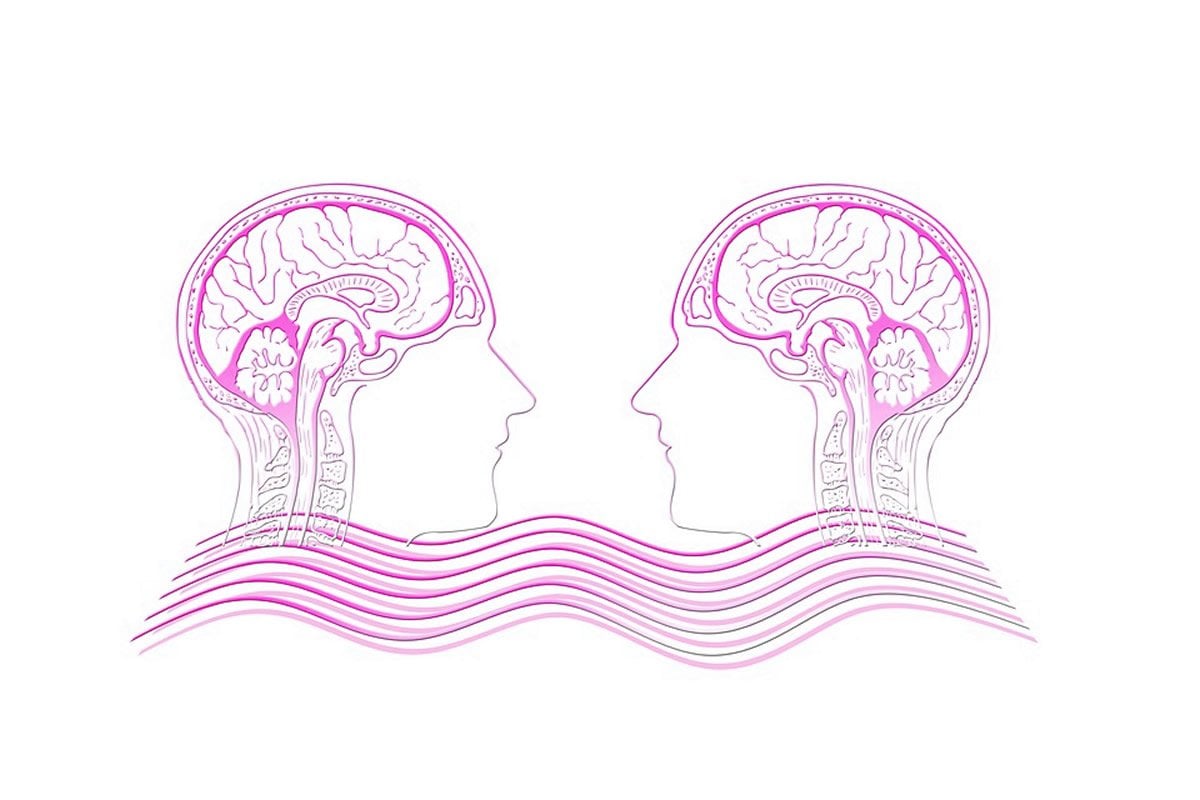Summary: Hyperscanning reveals the brains of patients and musicians sync during music therapy.
Source: Anglia Ruskin University
For the first time researchers have been able to demonstrate that the brains of a patient and therapist become synchronized during a music therapy session, a breakthrough that could improve future interactions between patients and therapists.
The research, published in the journal Frontiers in Psychology, was carried out by Professor Jorg Fachner and Dr. Clemens Maidhof of Anglia Ruskin University (ARU).
This is the first music therapy study to use a procedure called hyperscanning, which records activity in two brains at the same time, allowing researchers to better understand how people interact.
During the session documented in the study, classical music was played as the patient discussed a serious illness in her family. Both patient and therapist wore EEG (electroencephalogram) caps containing sensors, which capture electrical signals in the brain, and the session was recorded in sync with the EEG using video cameras.
Music therapists work towards “moments of change”, where they make a meaningful connection with their patient. At one point during this study, the patient’s brain activity shifted suddenly from displaying deep negative feelings to a positive peak. Moments later, as the therapist realized the session was working, her scan displayed similar results. In subsequent interviews, both identified that as a moment when they felt the therapy was really working.
The researchers examined activity in the brain’s right and left frontal lobes where negative and positive emotions are processed, respectively. By analyzing hyperscanning data alongside video footage and a transcript of the session, the researchers were able to demonstrate that brain synchronization occurs, and also show what a patient-therapist “moment of change” looks like inside the brain.
Lead author Jorg Fachner, Professor of Music, Health and the Brain at Anglia Ruskin University (ARU), said: “This study is a milestone in music therapy research. Music therapists report experiencing emotional changes and connections during therapy, and we’ve been able to confirm this using data from the brain.

“Music, used therapeutically, can improve wellbeing, and treat conditions including anxiety, depression, autism and dementia. Music therapists have had to rely on the patient’s response to judge whether this is working, but by using hyperscanning we can see exactly what is happening in the patient’s brain.
“Hyperscanning can show the tiny, otherwise imperceptible, changes that take place during therapy. By highlighting the precise points where sessions have worked best, it could be particularly useful when treating patients for whom verbal communication is challenging. Our findings could also help to better understand emotional processing in other therapeutic interactions.”
Source:
Anglia Ruskin University
Media Contacts:
Jon Green – Anglia Ruskin University
Image Source:
The image is in the public domain.
Original Research: Open access
““Telling me not to worry…” Hyperscanning and Neural Dynamics of Emotion Processing During Guided Imagery and Music”. Jörg C. Fachner, Clemens Maidhof, Denise Grocke, Inge Nygaard Pedersen, Gro Trondalen, Gerhard Tucek and Lars O. Bonde.
Frontiers in Psychology. doi:10.3389/fpsyg.2019.01561
Abstract
“Telling me not to worry…” Hyperscanning and Neural Dynamics of Emotion Processing During Guided Imagery and Music
To analyze how emotions and imagery are shared, processed and recognized in Guided Imagery and Music, we measured the brain activity of an experienced therapist (“Guide”) and client (“Traveler”) with dual-EEG in a real therapy session about potential death of family members. Synchronously with the EEG, the session was video-taped and then micro-analyzed. Four raters identified therapeutically important moments of interest (MOI) and no-interest (MONI) which were transcribed and annotated. Several indices of emotion- and imagery-related processing were analyzed: frontal and parietal alpha asymmetry, frontal midline theta, and occipital alpha activity. Session ratings showed overlaps across all raters, confirming the importance of these MOIs, which showed different cortical activity in visual areas compared to resting-state. MOI 1 was a pivotal moment including an important imagery with a message of hope from a close family member, while in the second MOI the Traveler sent a message to an unborn baby. Generally, results seemed to indicate that the emotions of Traveler and Guide during important moments were not positive, pleasurably or relaxed when compared to resting-state, confirming both were dealing with negative emotions and anxiety that had to be contained in the interpersonal process. However, the temporal dynamics of emotion-related markers suggested shifts in emotional valence and intensity during these important, personally meaningful moments; for example, during receiving the message of hope, an increase of frontal alpha asymmetry was observed, reflecting increased positive emotional processing. EEG source localization during the message suggested a peak activation in left middle temporal gyrus. Interestingly, peaks in emotional markers in the Guide partly paralleled the Traveler’s peaks; for example, during the Guide’s strong feeling of mutuality in MOI 2, the time series of frontal alpha asymmetries showed a significant cross-correlation, indicating similar emotional processing in Traveler and Guide. Investigating the moment-to-moment interaction in music therapy showed how asymmetry peaks align with the situated cognition of Traveler and Guide along the emotional contour of the music, representing the highs and lows during the therapy process. Combining dual-EEG with detailed audiovisual and qualitative data seems to be a promising approach for further research into music therapy.







